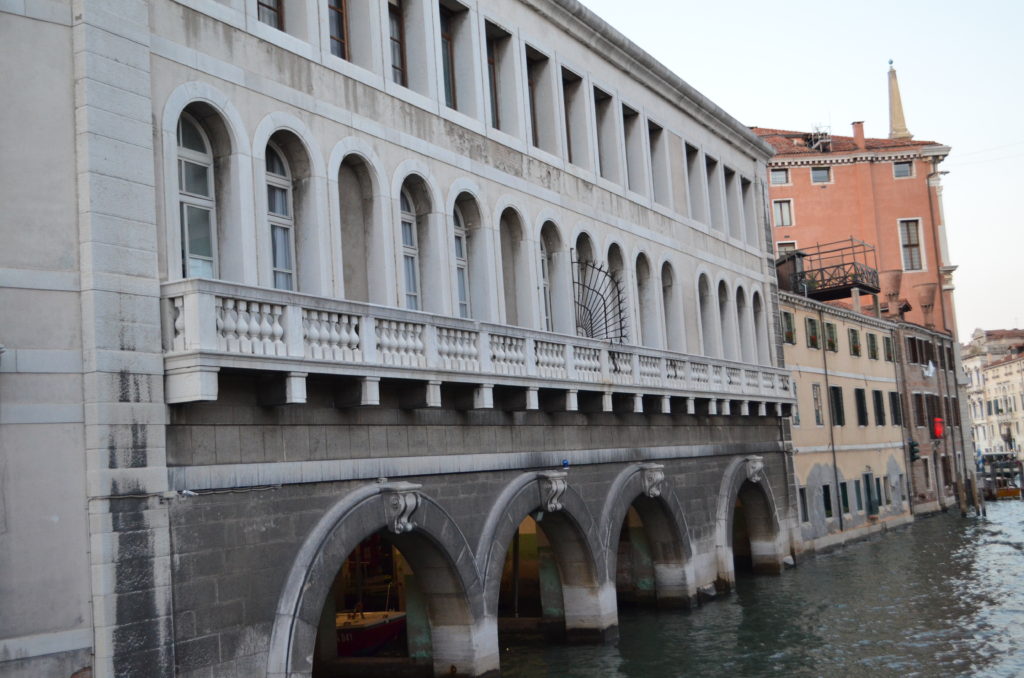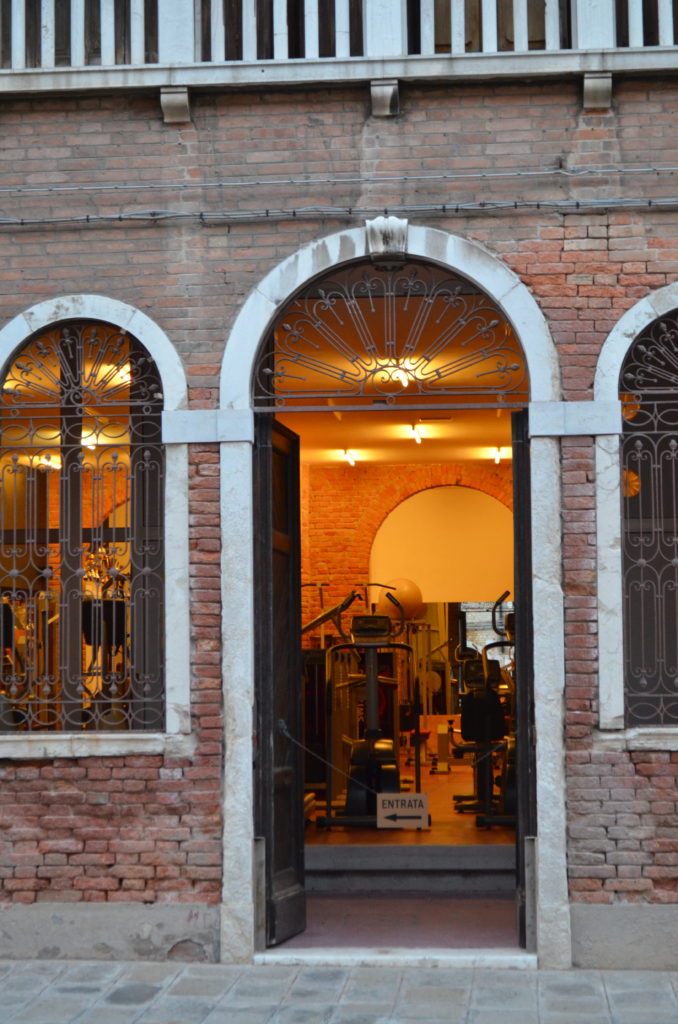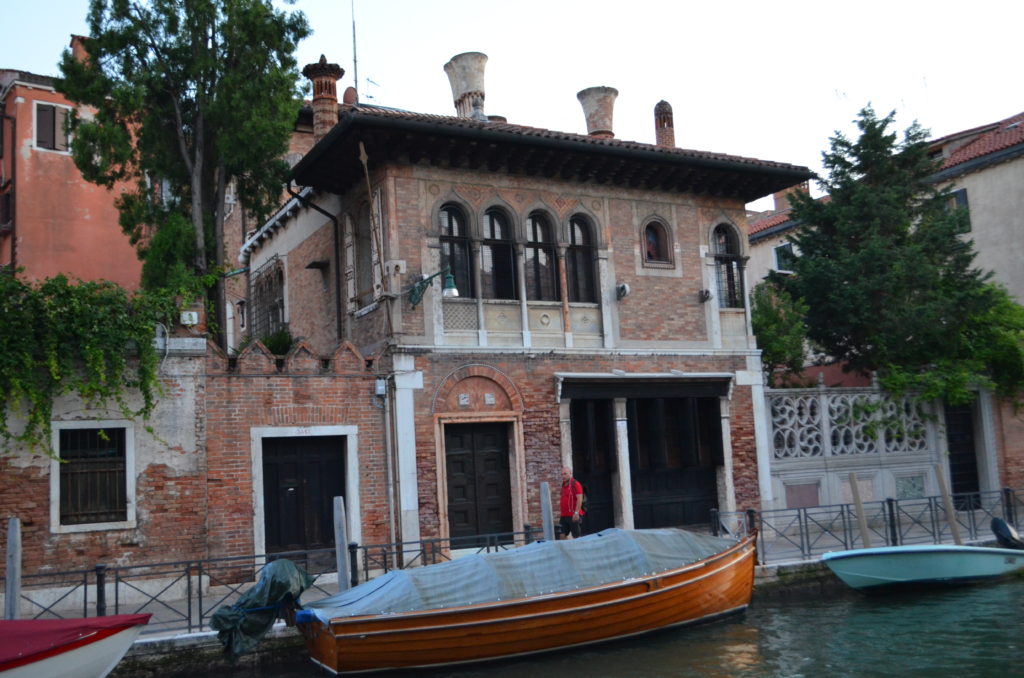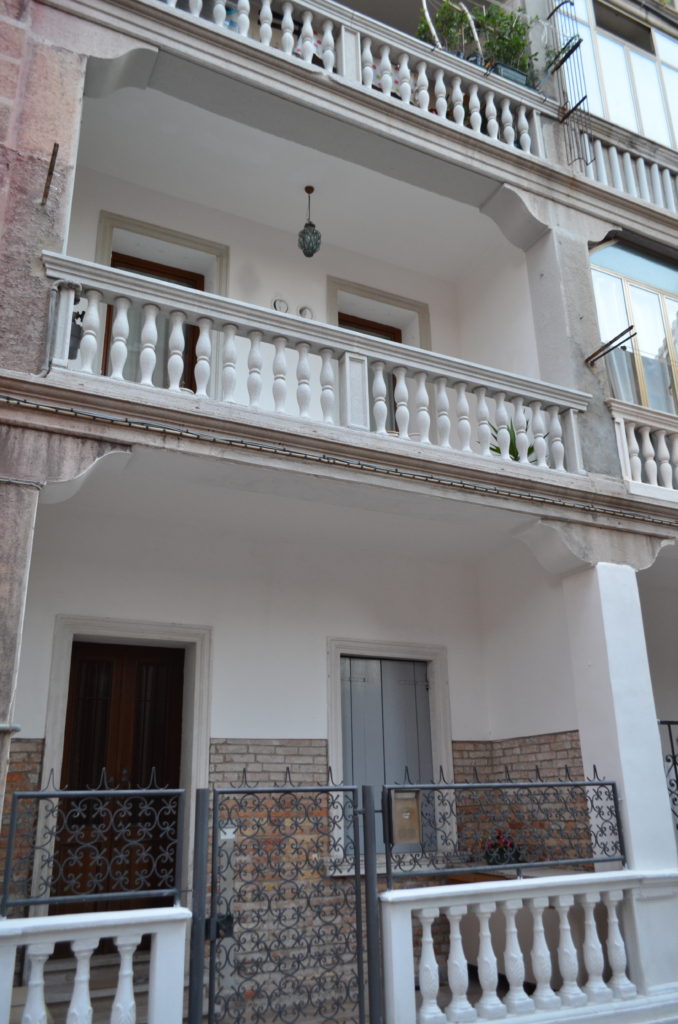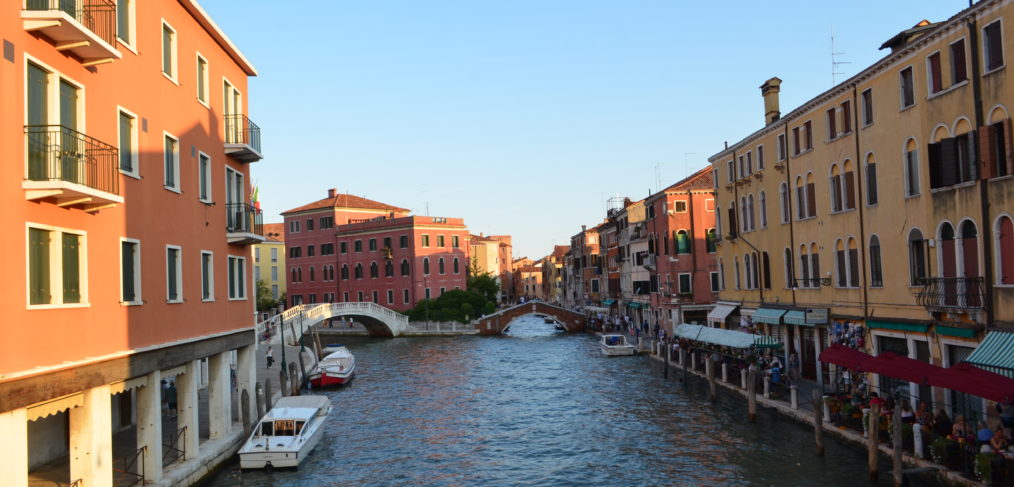
The many faces of Venice
Our adventure to Venice was planned with the intent of determining how much more existed to this famed city other than the Grand Canal and island hopping to Murano. Because of my stint in the Verona Hospital and recovery time, our schedule was cut radically short, so we knew going in this was going to be fast and furious. We needed focus. We needed energy and we needed good walking shoes!

One view from the top of the first canal as you leave either parking, train or cab drop off
Arrival and parking
If you arrive between 11 and 3, you are unlikely to get parking in the main drop off area, so be safe, park, and walk the quarter mile over the bridge into Venice. If you arrive late afternoon, then you’ll likely get parking right in the center, which is what we did. Two structures exist: one for short term (2 hours) and the other for long term. A single lane road is the only way to access both, but it’s short, about one feet in length. It’s a bit of a bottleneck, but an attendant stands to guide traffic, and if you want the two-hour, zip right and you are in. Payment is made when you leave, at the counter located at the entrance, so take your ticket and go on your way.
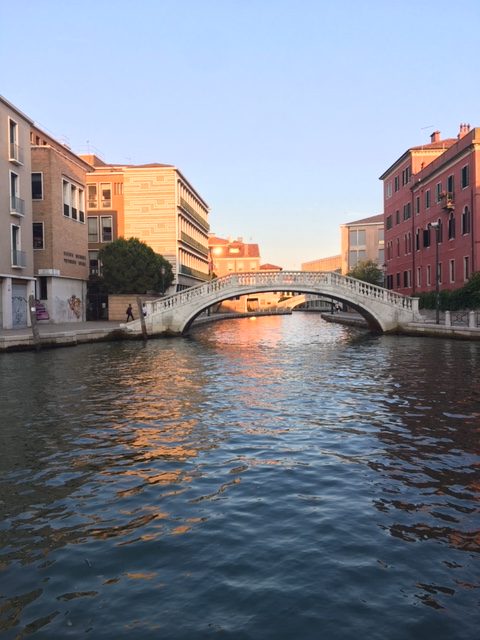
Nary a gondola or waterway taxi to be seen, and this is about two canals away from the drop off point.
When you arrive in Venice, either by car, train or boat, it may take a moment to notice the absence of bikes, a common site around Europe, not just Italy. In Venice, two-wheeled vehicles aren’t allowed, nor cars, which must be parked in one of several structures either outside the primary bridge to the island. Once off the long bridge to Venice, you will see a multi-story building, and parking spaces are identified by a space counter. We head others complaining about the lack of transportation on Venice, evidently expecting bike or scooter rentals and/or cabs, so I thought to write a note about this for the uninitiated.
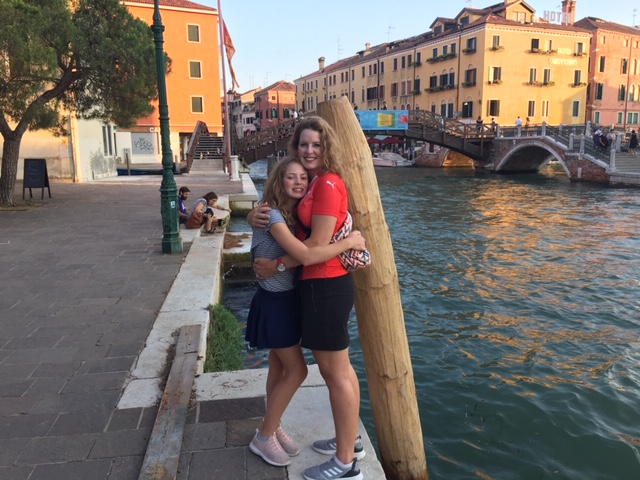
This is actually the best shot of “the first” canal bridge in the upper right–you can see it leads several directions, and then down on lanes on either side of the canal proper.
Train
The train service is crazy good, although we didn’t need to take it. Multiple trains coming and going drop and pick up throughout the day, directly to this main area, where people in streams unload. One aspect that’s nice (and little known) is the cruise ships are on the other side of Venice, unloading at the docks. This means those arrive by car or train enjoy a much less crowded experience and more leisurely pace than the hoards of cruise lines passengers. The downside (isn’t there always a downside) is those of us in this area must walk a greater distance to reach the Grand Canal, if that’s the ultimate destination.
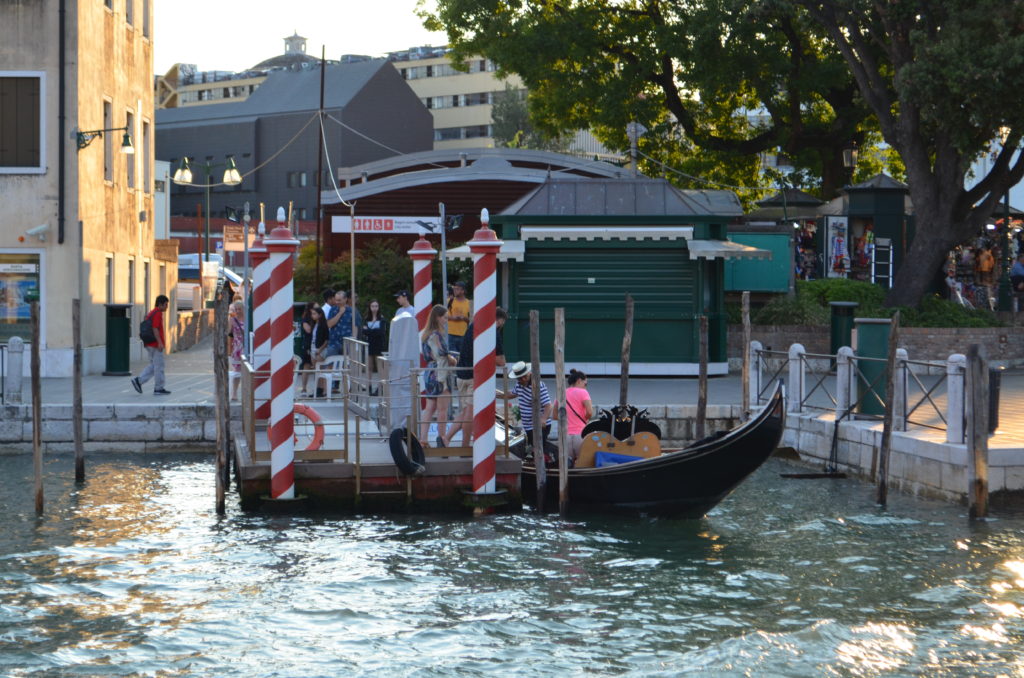
Less than 5 minutes from the cab and train drop off is this one and only gondola offering in this area. At 6 at night, it’s walk right up and in.
Walking the blocks
If you want to start off with a gondola ride, it’s less than five minutes from either the parking or train station right down to the only gondola. It has two slots, but when people are waiting, gondolas seemed to magically appear, leading us to believe a radio operator is ever ready to call in reinforcements. If a water tour is more to your liking, you will have to search elsewhere, for while many go by, the pickup/dropoff points aren’t in this zone.
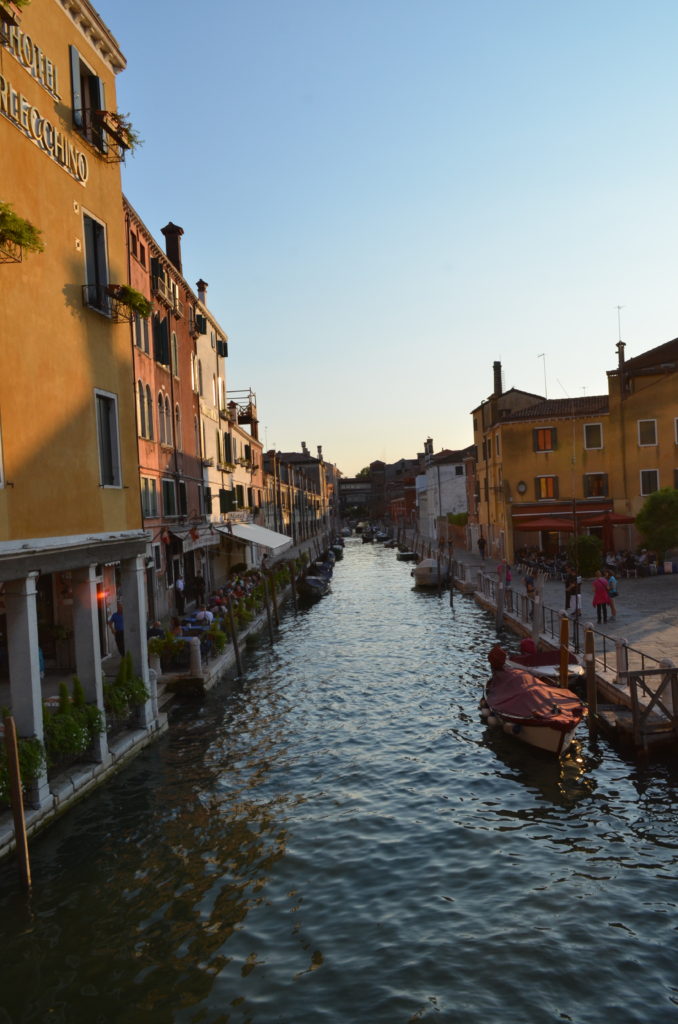
To the right is right where you walk after parking/taxi or train drop off. Across the water are tables filled with evening diners. Not all streets have cafes next to the water–only some, and why the reasoning is a mystery.
With our feet as our guide, we started from the parking station to the first intersection of two canal bridges and a canal pathway. Our first stop was gelato, a must-have on a journey. One block down, another canal, turned left (because we could) and continued forth, zigging and zagging down every alley and main street, up and over a multitude of canal bridges. Going back to the no-bikes rule, even if they were allowed, bikes wouldn’t be much use: the bridges are steps, not smooth surfaces like Chioggia. Food services and goods deliveries are all done by ferry, mostly in the middle of the night and early morning when the tourists have long gone.
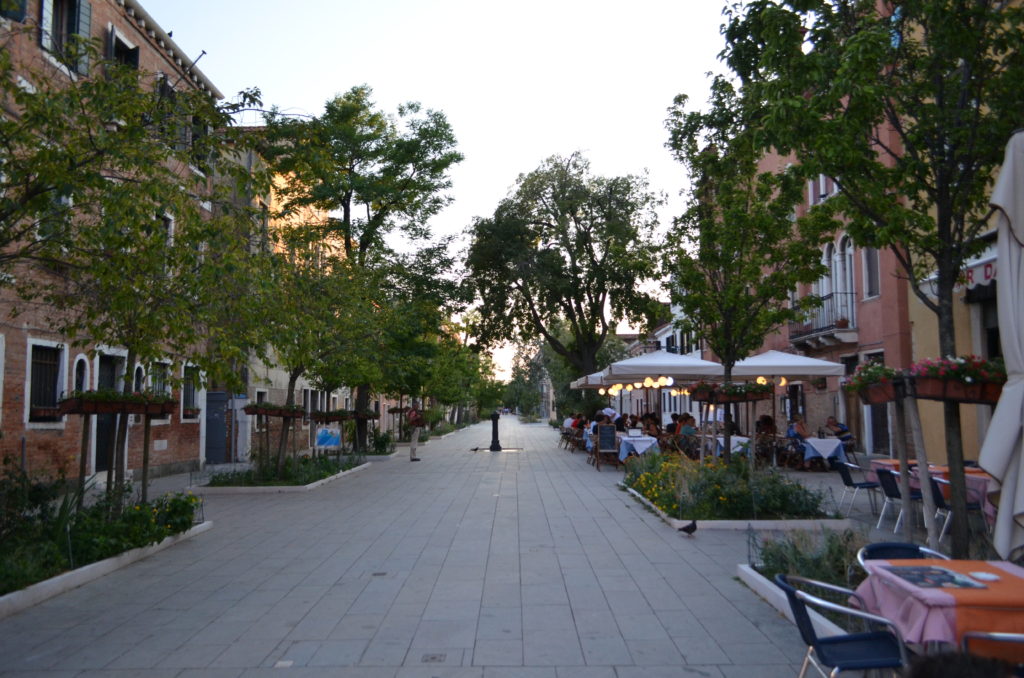
One block in, and on the right is a regular lane with more cafes. What you don’t see (or hear) was a man singing Italian tunes and playing a guitar rather romantically.
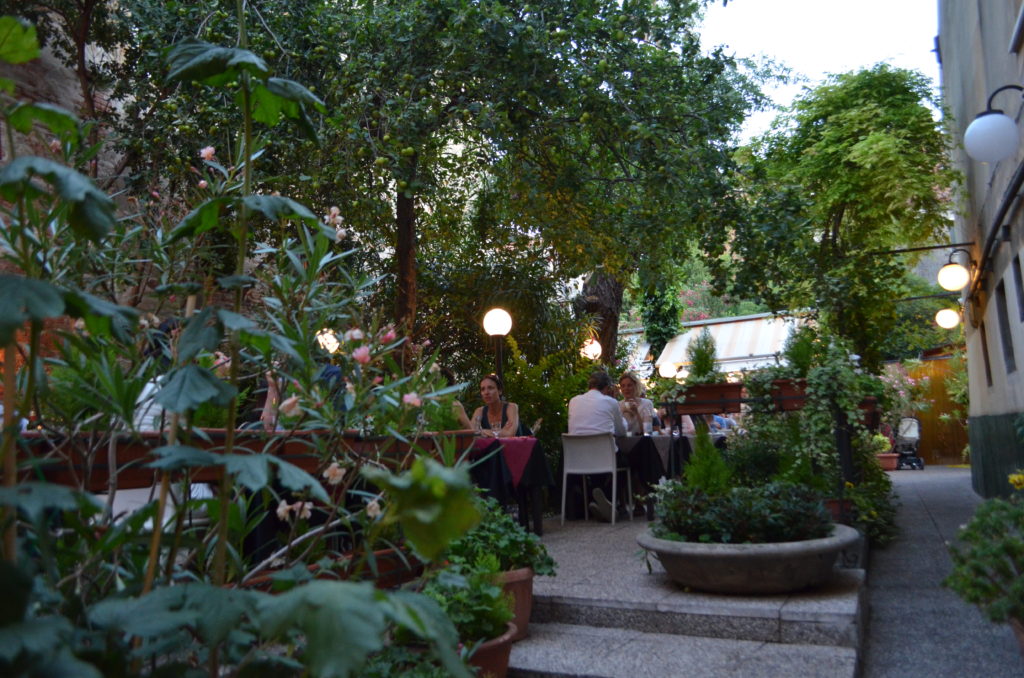
Another eatery partially hidden behind a iron gate, but open to the public.
Gyms and graffiti
Where do you walk down a canal, under the red brick archways into an open-door gym? Venice, obviously. And any respectable gym must have hip hop music blasting in order to use the weights and cardio machines located five feet from the front desk. It didn’t hurt the visual that the setting sun made the entire street and canal an orange red. In fact, it blended right in with the coloring within the gym itself.
Ok, really? Have you ever seen a blog on Venice post a picture of a gym? Neither had I, so this is it, and a rather glamorous looking one at that, don’t you think? And yes, about a half dozen folks were working out.
Around another corner and through an incredibly narrow street, the avenue opened into a triangular shape and a soccer ball came hurling towards my legs. A boy darted in front of me, kicked the back to his friend, the impromptu soccer game between four youth between ten and twelve seemed strange until I looked up and around. The buildings were decidedly familial, bars and crusted paint falling off and mail-slips. It was a neighborhood, like any other, except on a world-famous island in Italy.
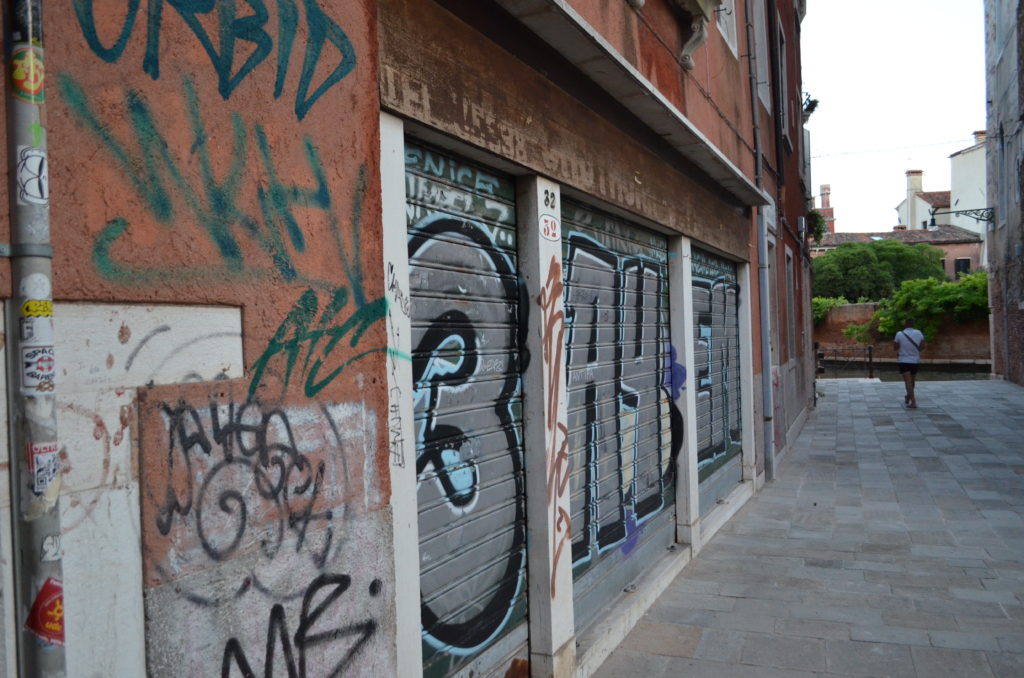
And this! It shocked me more than the gym, because people want to look good, but the city fathers can’t take the time to remove graffiti, and worse, people desecrate the area? I’m all for artistic murals, but this doesn’t qualify.
As we continued the journey, a single avenue changed the entire experience: backstreet soccer game, graffiti-covered metal grates then a beautiful canal with upscale restaurants, then and open square full of hipsters and chill out music and back again. All this still a half a mile away from the Grand Canal main drag, and nary a non-Italian in view (except us). Because we arrived at about 6 p.m., our day spent in Chioggia to the south, the freedom of movement allowed us to cover a lot more ground had it been wall-to-wall tourists.
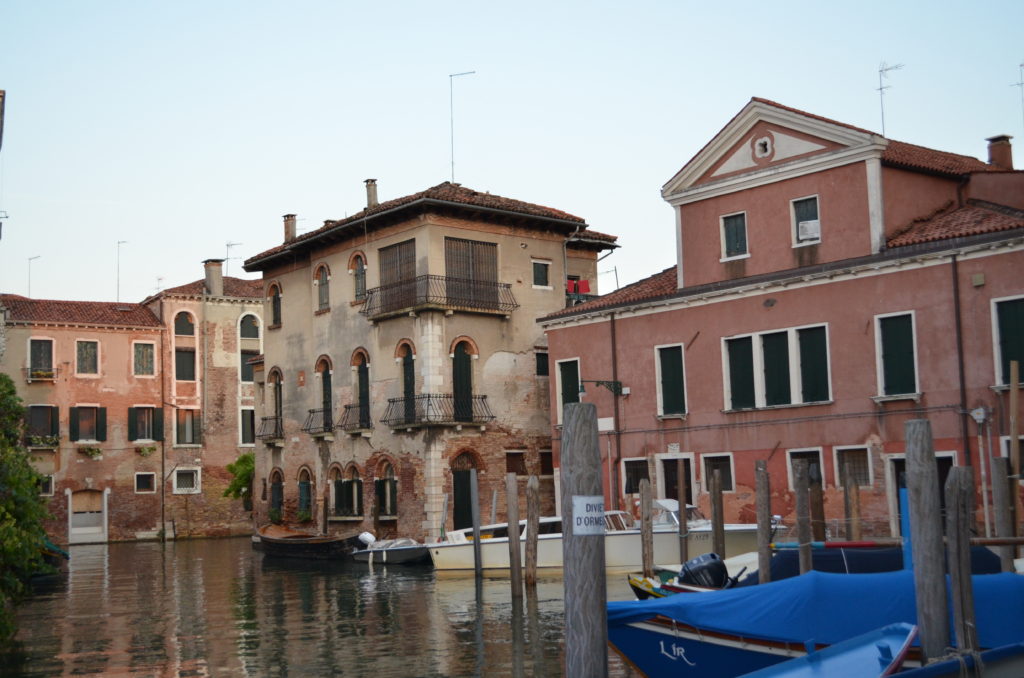
Think of this as the Venice outskirts, still good real estate with boats outfront but perhaps without the murals on the ceilings.
Just like every other big city
Where one lane is merchants, another is residences, some grand, but most not. Short, narrow doors are not images of Venice blasted around the world. If you’d not been to Venice before, it would be natural to believe every home is a three-story villa with hand-painted mosaics on the ceiling with gold leaf encrusted chandeliers. We watched a woman holding a bag full of groceries pull out her key, open and enter an unassuming door, her attire professional attire resembling a bank teller or shop keeper.
Like any city, different canals showcase a different style of property, probably reflective of the value.
Where in the world was the grocery store? I wondered, becoming completely distracted by the visual of how many canals she had to cross with that single bag. Second to that was imaging the size of the biceps on the average Venician residents. Yes, that’s the kind of thing an author thinks about, or at least, what this author thinks about.
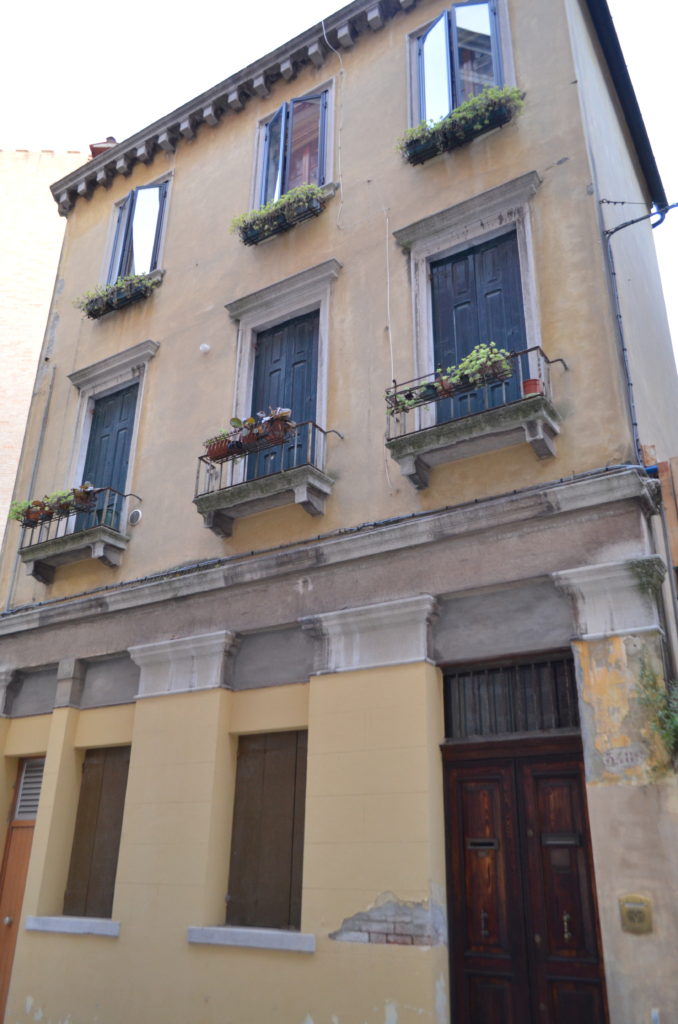
The canal neighborhood where the kids were playing soccer.
Another home where we saw professionals entering and exiting.
This leads to touch on the subject of shopping. Whereas Chioggia had Italian brands with a smattering of name brands, Venice is the opposite: the majority of mercantile are well-known by the average consumer. Of the little overlap I saw, Venice easily had a 40% premium over Chioggia.

Just one street over is shopping and wide lanes, hotels and eateries.
The take away
If you have the time to take in the famous and not-so-famous areas of Venice, definitely do it, otherwise, it’s like thinking all of New York is Broadway, when in fact you have Central Park, Brooklyn and Park Avenue, each one providing a completing different perspective of a grand city. Whereas Chioggia was all Italians, (we didn’t hear another language spoken) Venice was the exact opposite. The streets were packed full of diverse ethnicities and languages with helpful tour guides translating, many also wearing translating devices around their necks.
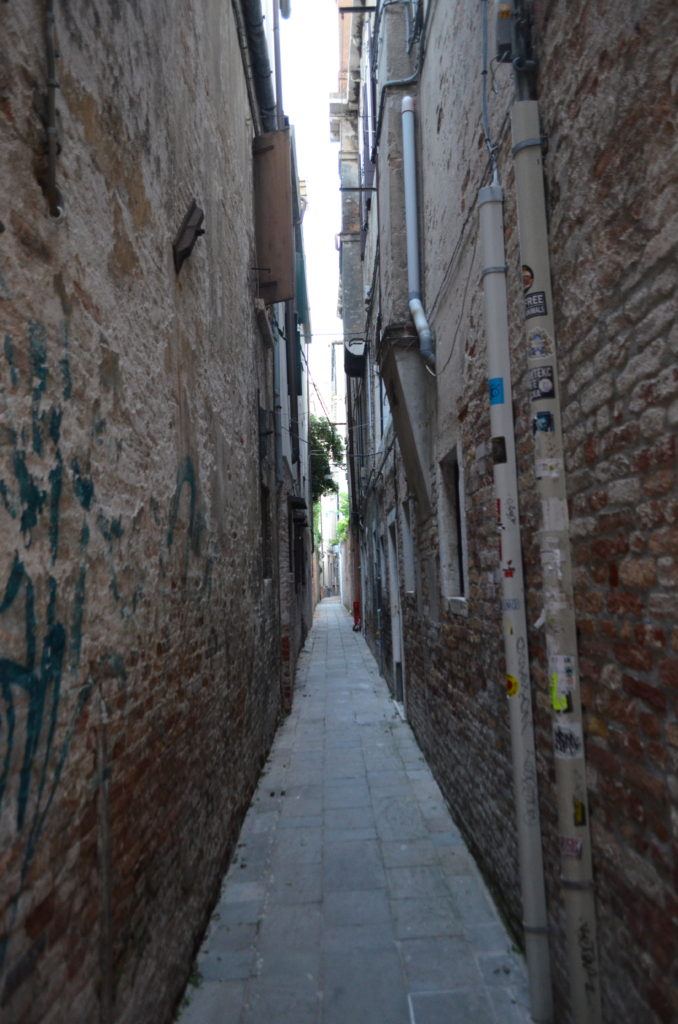
I’d like to see those well-fed Merchants of Venice squish themselves down this lane.
Unless you are coming in from a boat, the ideal day trip is the morning for Chioggia and afternoon for Venice, thereby missing the worst of the crowds. You’ll be able to compare and contrast your impressions of the most famous seaside town in Italy, and perhaps the least, all in the same paragraph.
